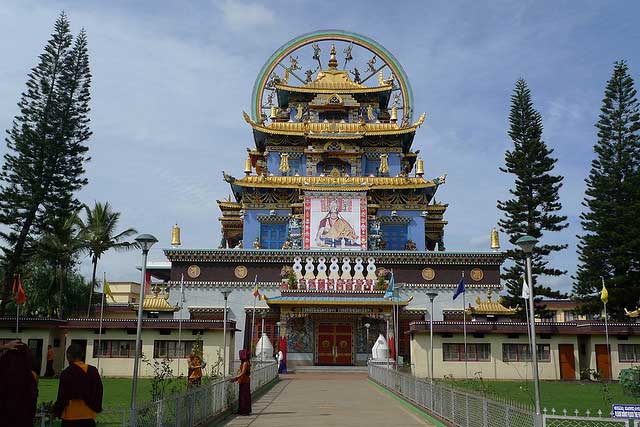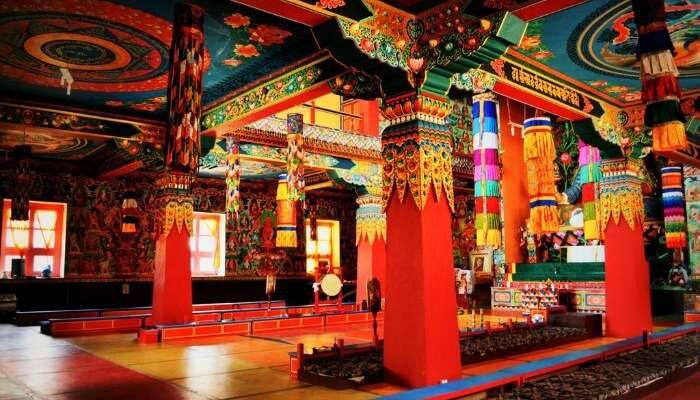Namdroling Monasteryis the largest teaching centre of the school of Tibetan Buddhism known as Nyingmapa. Popularly known as the 'Golden Temple', the Namdroling Monastery holds some excellent examples of Tibetan architecture and artwork, as seen with the elaborately decorated temple tower and ornate outer walls, intricately adorned with beautiful murals. It is spread over an area of 80 square feet and was built from Bamboo which was donated by the Indian Government to the Tibetans in exile. Today, it houses many auxiliary structures like educational institutions and a hospital, in addition to being home to about 5,000 members of the Sangha community.

Thegchog Namdrol Shedrub Daryeling is the full name of the Namdroling Monastery. The foundation for this majestic monastery was laid down in 1963 by His Holiness Pema Norbu Rinpoche, the 11th throne-holder of the Palyul lineage of the Nyingma School of Tibetan Buddhism, following his exit from Tibet. The initial structure was made of bamboo and covered an area of 80 sq feet. The current 80 sqm area that the temple holds is thanks to the generosity of the Indian government, who donated the land to the Tibetan refugees who settled in the area. Inside, one has the privilege of witnessing the enormous 40 feet high golden statues of Guru Padmasambhava, Buddha Sakyamuni and Amityaus, surrounded by lovely paintings of various aspects of Tibetan Buddhist mythology. The prayer rituals conducted by the monks are a unique sight that must not be missed. The serene vibe of the place is amplified by the well-manicured gardens that surround the area.
Although the monastery seems not so vast from outside, it is huge inside. There are three 40 feet high statues of Lord Buddha called Padmasambhava, Buddha & Amitayus. The floor is made of marble but is always covered with a carpet. People can burn incense sticks and sit on the carpet which contributes to the spiritual environment in the temple. The walls have paintings depicting phases of Buddha's life. Some even display Tibetan gods and demons. The Namdroling Monastery also has sacred texts, horns, trumpets, incense sticks, bells, prayer beads, prayer wheels, prayer flags, drums, etc.

Those who visit the monastery need to maintain silence in order to help out the ones who meditate. Due to the presence of the gold statues, it is also known as the golden temple. Lord Buddha's statue is 60 feet in height and those of Guru Padmasambhava and Amitayur are 58 feet high.

Placards are present near the entrance which contain that there are sacred scriptures in the form of statues along with small clay tupas which are symbols of the body, mind, and speech of the Buddhas. Their followers believe that if one worships these symbols and makes offerings then his/her faith will get restored and will help achieve peace, compassion, and wisdom.
The monastery was established by the 11th throneholder of the Palyul lineage, His Holiness Drubwang Padma Norbu Rinpoche in 1963, following his 1959 exit from Tibet as the second seat of the Palyul Monastery, one of the six great Nyingmapa Mother monasteries of Tibet prior to annexation.

The monastery's full name is Thegchog Namdrol Shedrub Dargyeling, called "Namdrolling or Namdroling" for short. Its initial structure was a temple constructed from bamboo, covering an area of approximately 80 square feet (7.4 m2). Carved from the jungle that the India government generously granted to Tibetan exiles, initial challenges included rampaging elephants and other tropical dangers.
